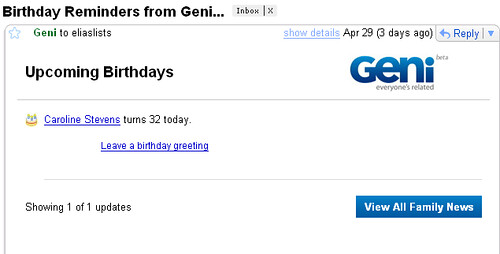Newspaper executives around the world are scrambling at a solution to the new marketplace. NewsCorp’s CEO in Australia remarked a few months ago that they only make 1/10th of the revenue on websites as they do through print – but with declining print circulation due to the popularity of online news – this is really affecting the bottom line of the industry. Unfortunately, they’ve been attacking news aggregators despite the fact that that’s the solution to their problems – it’s now a changed marketplace that they need to embrace.
The market dynamics are different now
Newspapers existed at a time when information was scarce. They performed the role of aggregating news (as well as creating it), and distributing it to the public through expensive channels which could not be easily recreated.
In today’s age, information is in abundance and is drowning out consumers – with a distribution environment that is now cheap. Further, the role of news aggregation can be done more efficiently through online tools. However this has caused a problem – because in the value chain of online news, the aggregators are the ones that are able to monetise the content. Because people don’t have time to read all the news now, they rely on aggregators that pull content from a variety of sources – and then only click on stories that capture their attention. These aggregators can place sponsored posts or advertisements alongside other articles, and so have found a new way to monetise content in the ‘click economy’.
However from the content providers point of view, they’ve invested time and money in creating unique content, only for it to be ignored by consumers because they no longer have a captive audience – and for aggregators who do, to be monetising content they didn’t pay for.
Newspapers need to drop advertising and think about the entire value chain
Content can no longer rely on advertising as a revenue model – as I’ve argued before, it’s a broken bubble economy. But premium content can exist as a paid subscriber service. This seems to be the direction newspapers are heading. But I think it’s a mistake to enact paid subscriptions on all newspaper websites – it will kill demand and will not scale across the entire industry, other than for the few globally recognised newspapers and strong national brands where their location gives them a comparative advantage (ie, LA times for entertainment; Washington Post for US politics; Wall Street Journal for the capital markets).
Rather than charge consumers to subscribe to a newspaper, what the newspaper companies should be doing is creating a new type of organisation that can pool their resources. They should do this in the same way they did with the associated presses around the world several decades ago, where they can source expensive overseas content in a cooperative, which can then be distributed by newspapers in their niche markets.
Newspapers should create niche aggregators modeled in the same way Google News, Techmeme and its political cousin memeorandum (shown below) have done. Consumers will pay a subscription fee to these aggregators to get access to certain sources of information. And newspapers will get proportionally remunerated through the co-operatative making money on the aggregators service, but also control the distribution of their premium content which can be monetised further down the value chain (ie, once a consumer visits their website).
The model scales because a consumer has only one organisation to deal with, and can control their content consumption and payments. The aggregators also allow the consumer to define what sources of information they value. Better still, this controlled environment of information distribution puts more onus on the content creators to generate quality product. If people include them in their aggregator subscription but never click on that particular organisations content, no one can be faulted but the content creator themselves for not creating compelling content.
Better still, market dynamics can come into play. Part of the function of an aggregator is to cluster stories. This allows for a fair way of distributing the content – the news source that pays a premium can get a higher weighting in this clustering. So an aggregator may have 50 sources that all get clustered as one headline; based on a sources ability to pay per headline, will determine how much the dominate in weighting. This then puts the onus on the newspaper to create a better sales force that can monetise content later down the value chain, which can subsidise this discovery phase of the value chain.
Is this the answer?
Who really knows but its a step in the right direction. With consumers paying to subscribe to an aggregator, they’re getting better value through diversity of inputs – and newspaper companies will get remunerated on how much content they provided as a proportion of the total attention by a consumer on the aggregator. The future of content will be driven by the subscription model, and this is a way that achieves that with the best value for a consumer.
Newspapers are reliant on the aggregators as a source of traffic and discovery. Rather than trying to kill them – they should copy them, license the technology and control the discovery phase of news consumption now crucial for today’s information-overloaded consumer.
What’s holding back newspapers from going down this path? They are too used to being the aggregators themselves. Instead, they need to realise that they must specialise now. They should focus on creating great content (a discussion in itself), and let technologists drive the discovery phase.


 It was interesting to read the
It was interesting to read the 


